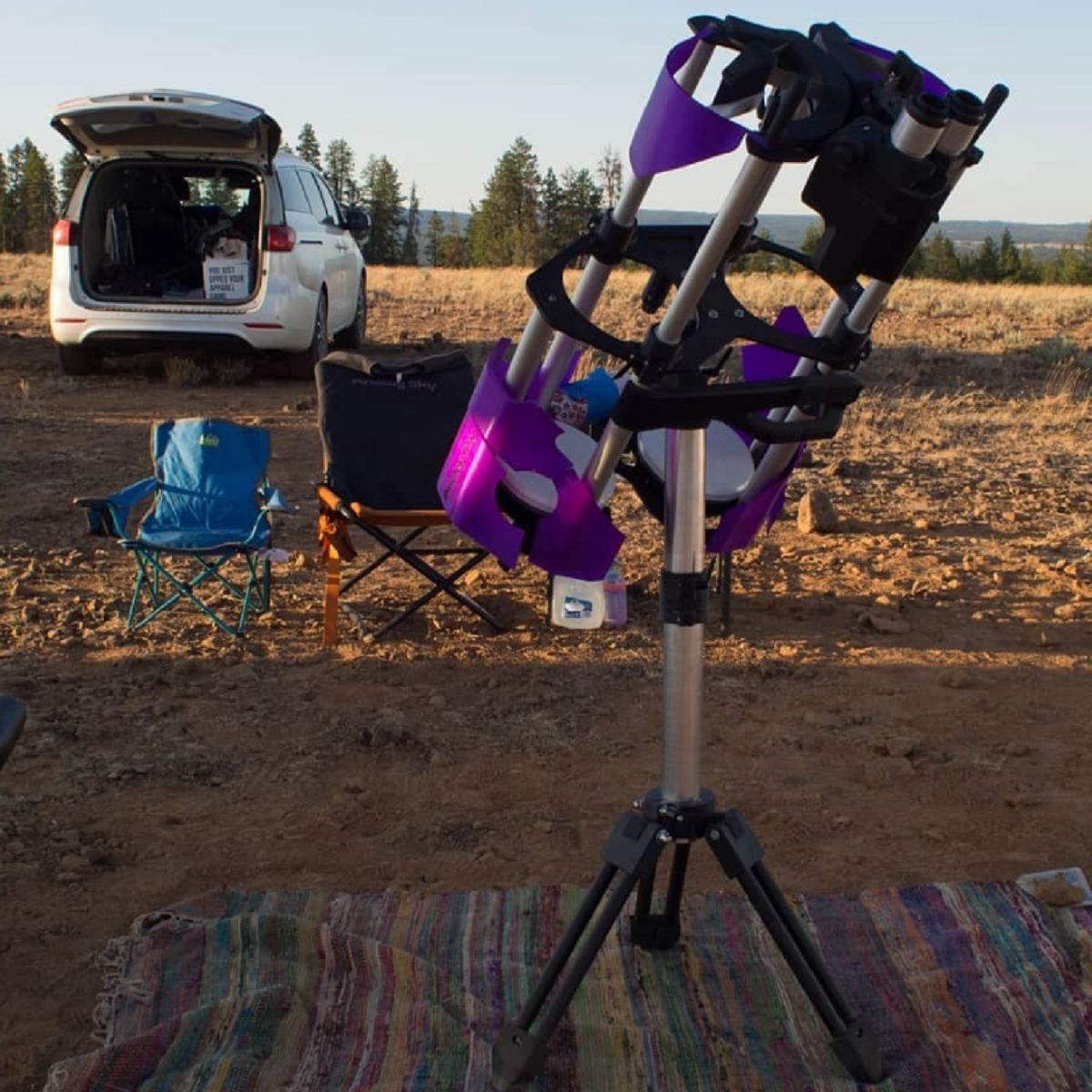Update: we’re happy to announce that Analog Sky is making a special offer just for Universe Today readers for its new giant binoculars.
A unique, crowd-sourced, 3D-printed telescope is poised to revolutionize how we look at the sky.
Late last year, we announced Oregon-based innovator and amateur astronomer Robert Asumendi’s plans to release the Analog Sky telescope system, featuring a set of giant space binoculars. Now, we’re happy to announce that Robert has officially launched the project as a crowd-funded campaign on Indiegogo.
Handheld binoculars offer a generous field of view, and an intuitive approach to viewing the sky: there’s no ‘looking down to look up,’ like with using a traditional telescope. This is a common eye-brain barrier to observing, where the user has to continuously re-translate the view at the finder, then the naked eye sky, then at the eyepiece. I see this dilemma constantly while coaxing the general public to look through the eyepiece of a telescope. Traditional giant binocular telescopes, however, have been difficult to field in practice. A prime constraint is the doubling the optical train and the resulting cost (you need two of everything: two mirrors, two eyepieces, two optical tubes etc) and, like with handheld binoculars, you need to adjust the diopter spacing (the distance between the two eyepieces) for each individual observer. Finally, the uninitiated user has to adjust each individual eyepiece to focus for each separate eye.
It’s a tall order, but the results are worth it. Giant binoculars can offer a true-view through two eyes, giving the observer an experience like you are truly in space.
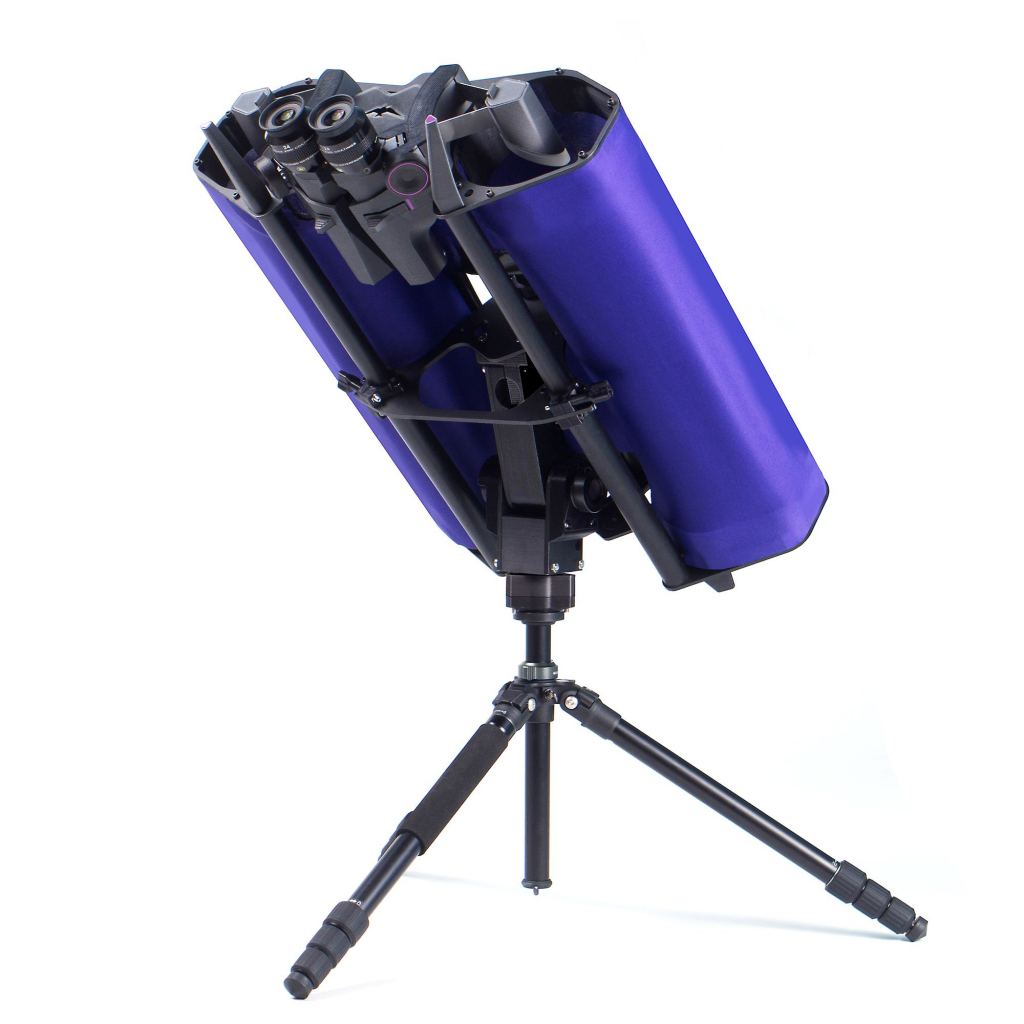
And the Analog Sky Giant Binoculars definitely deliver. An ambitious project, the Analog Swift offers a 6” pair of mirrors, and the Analog Drifter setup uses an 8” pair of mirrors, both with a fast f/4.5 focal ratio. The result is a generous 2.4 degree field of view, nearly five times as wide as the Full Moon. This setup is ideal for sweeping the sky and nabbing deep-sky wonders.
“The added brightness benefit of large binoculars increases with the size of the target,” Robert told Universe Today. “The view (in the 8” Drifter) is pretty comparable to a 12” ‘scope in terms of brightness.”
The Swift and Drifter giant binoculars are both futuristic-looking and easy to use. I especially like how the magnetic interlocks allow the user to easily and quickly swap out eyepieces. Likewise, diopter-spacing and individual focusing is easy to accomplish, again, key to an enjoyable binocular telescope appearance.
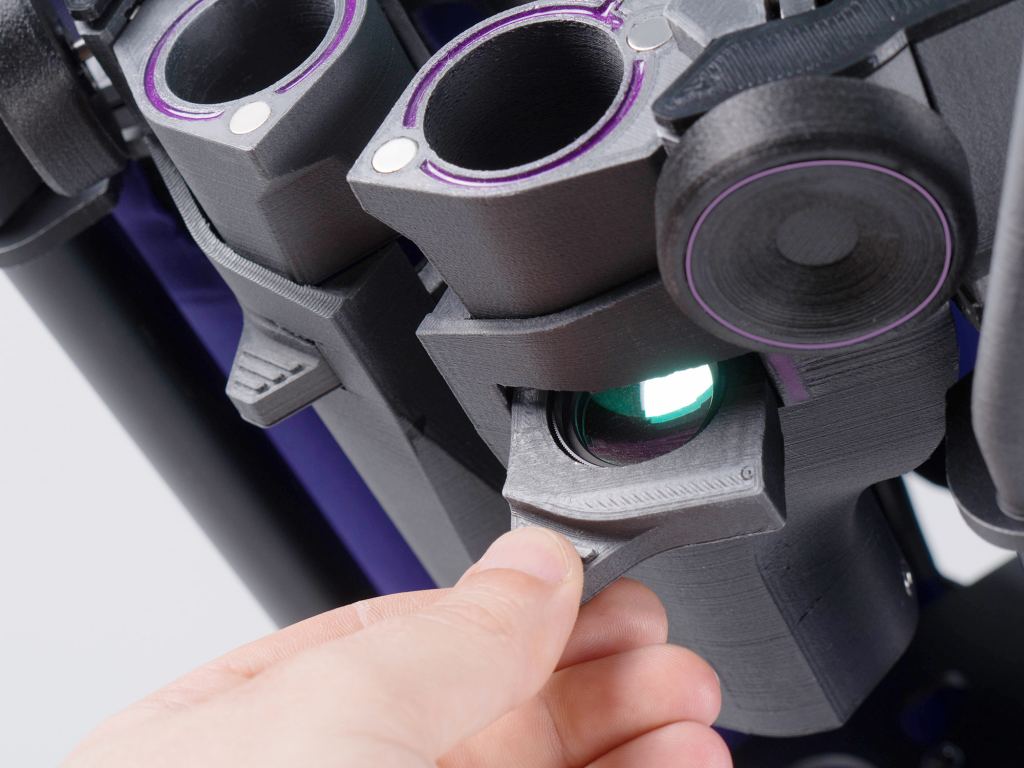
The finder incorporates some unique features as well. “Swift comes with a standard red dot finder, but will come with all popular dovetails,” Says Robert. “The Drifter comes with a cold weather capable 5-milliwatt green laser. It includes a cable release so you can fire it with your head safely out of the way.”
The Indiegogo project features a parametric CAD (Computer-Aided Design) program for 3D printing parts. There are more than 70 original 3D printed parts that make the Swift a unique instrument. Progressive levels of reward include either the plans and design to print the Swift parts yourself, or a pre-printed 3D kit shipped for assembly. The first Swifts/Drifter giant binoculars are expected to ship in July 2021.
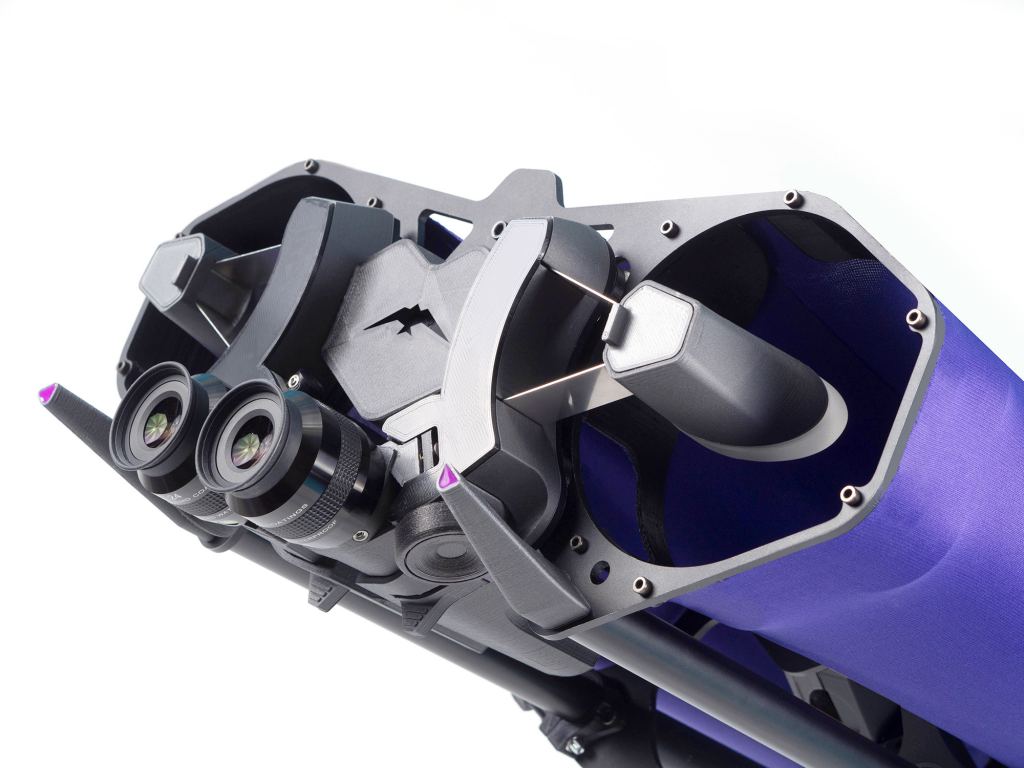
On the non-3D printed parts for the Swift, Robert notes: “The frame is all powder-coated and black anodized aluminum. The secondary mirror vanes are stainless steel. The mount axes are ground stainless steel shafts. The tertiary mirror mounts are research-grade kinematic mounts from Newport.”
Two eyes are not only better than one: there’s another reason to “go binocular.” In Robert’s case, one motivating factor was his severe astigmatism. Astigmatism is a refractive error resulting in blurry vision, a common condition where stars always appear out of focus and fuzzy.
What can you see with binoculars? Well, though such a wide-field system isn’t optimized for planetary viewing, binoculars are ideal for taking that big leap into deep-sky observing. Binoculars are also our preferred tool of choice for sweeping up comets: simply scan the suspected field, and watch for the little fuzz-ball of a comet that refuses to snap into focus. This Spring we’ve got two good targets, as comets C/2017 T2 PanSTARRS and C/2019 Y4 ATLAS both attain binocular visibility.
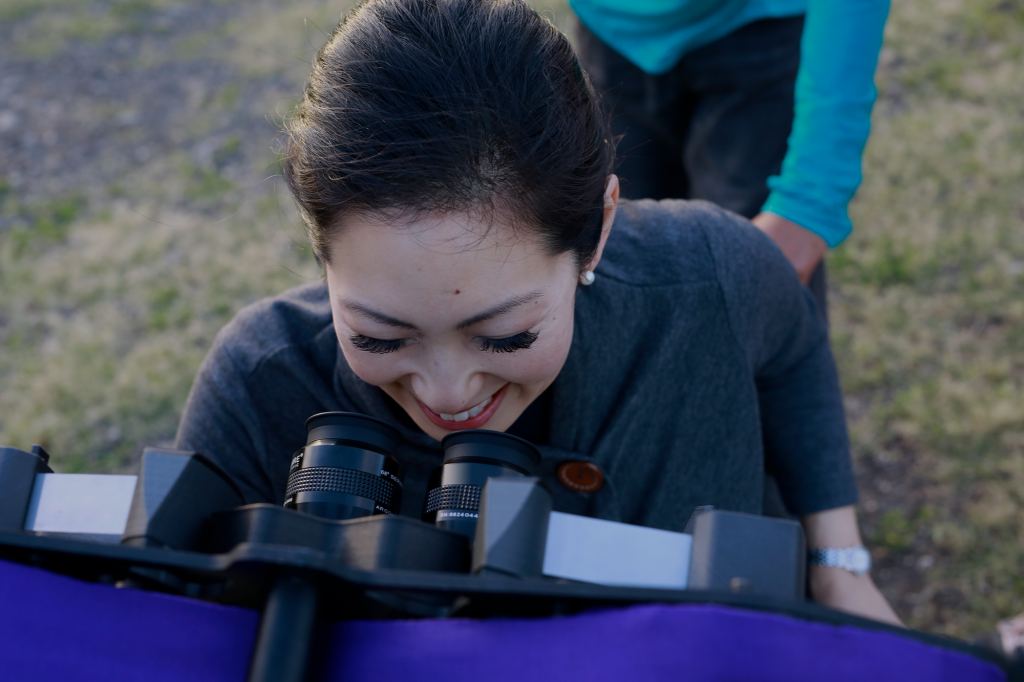
The public is also impressed with early views through Robert’s giant binocular telescope. “Non-astronomers are able to walk right up to the binoculars and use them,” says Robert. “With two eyepieces, people intuitively understand how to orient their bodies so it’s actually less confusing than sitting down at a Dob(sonian). The joystick handles invite people to move and play with the view. People can’t believe the view through both eyes. Binoculars amplify that full experience and people really feel that at the eyepieces.”
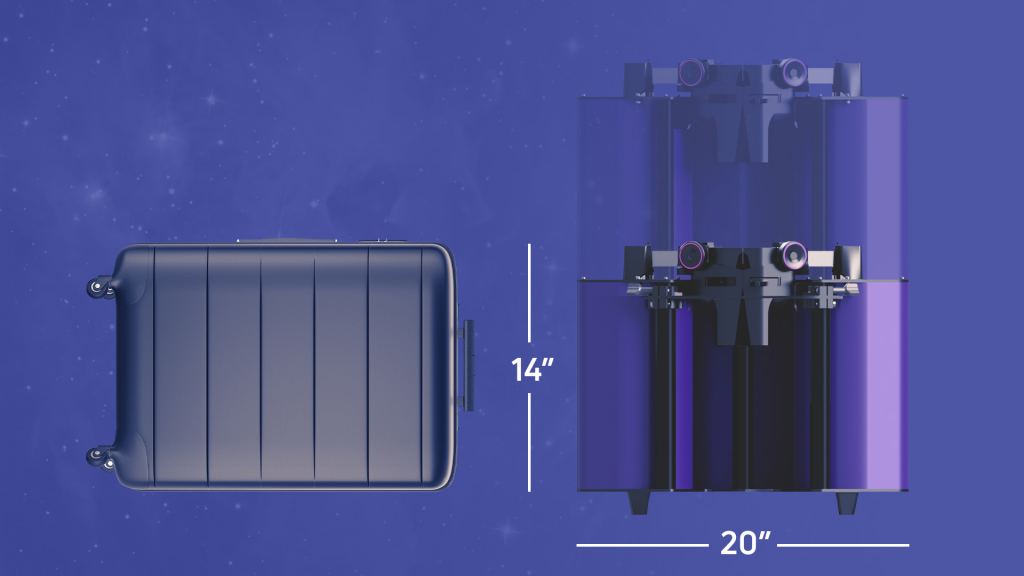
I’m really eager to get a look through a pair of these. Looking at the site, we noticed that the Swift breaks down to fully fit in an international airline carry-on size, another plus. Be sure to get in now on the Analog Sky Giant Binocular Project: the funding runs until April 5th.

